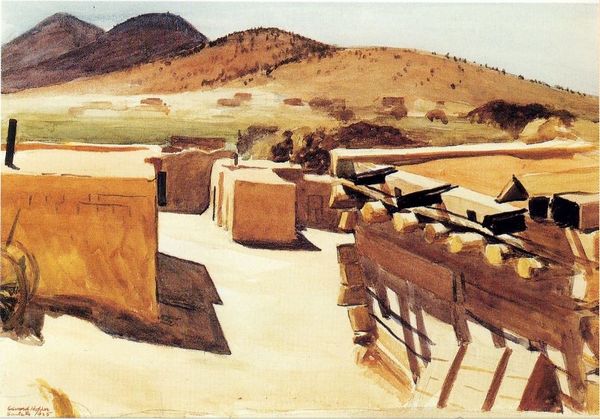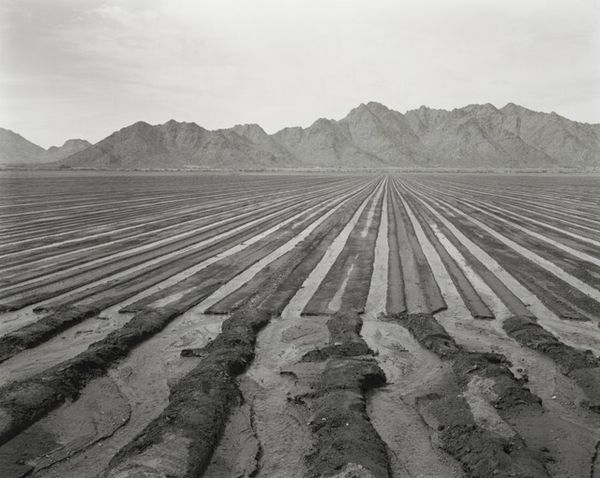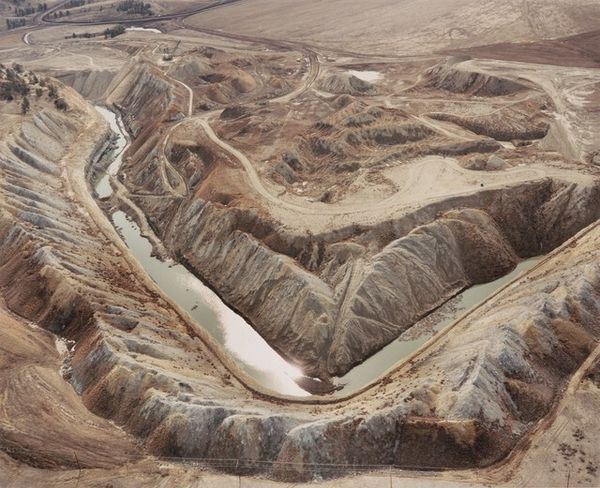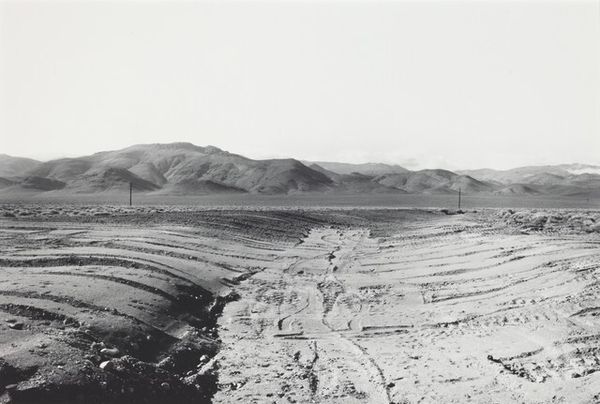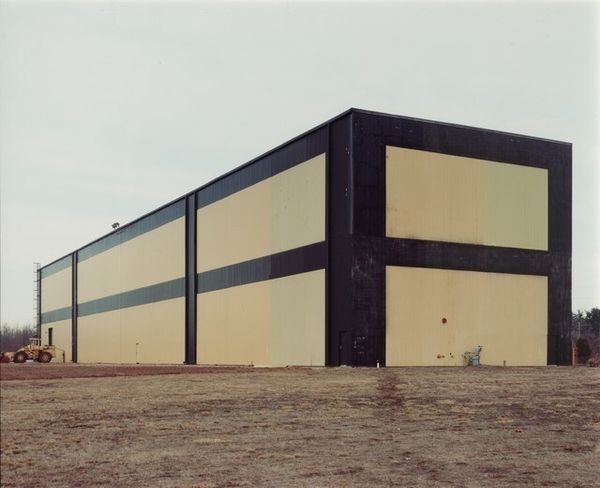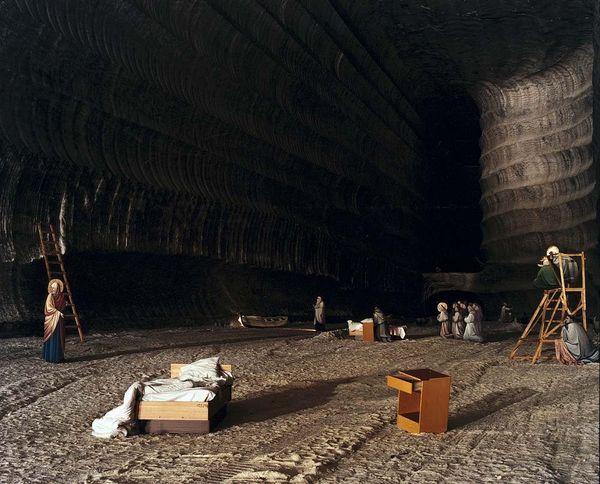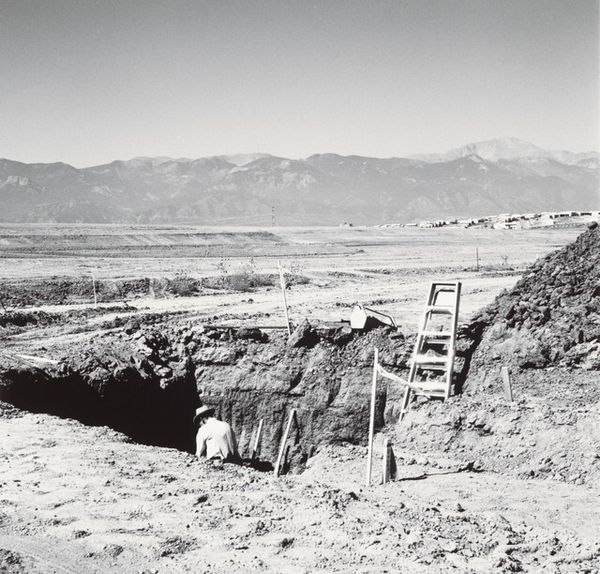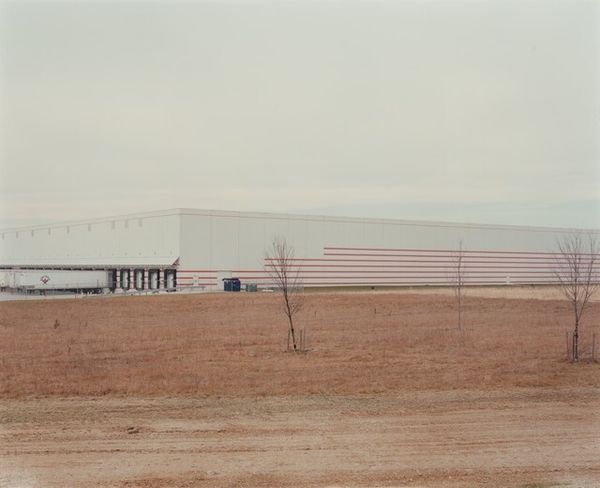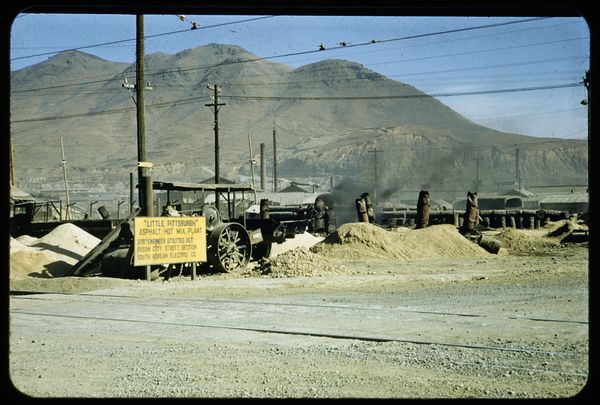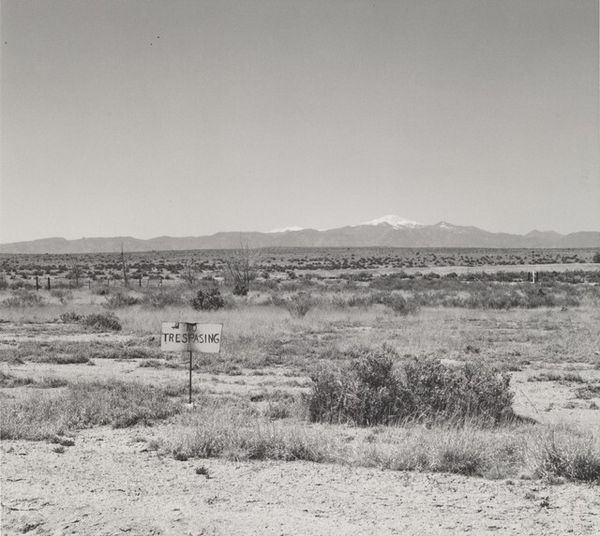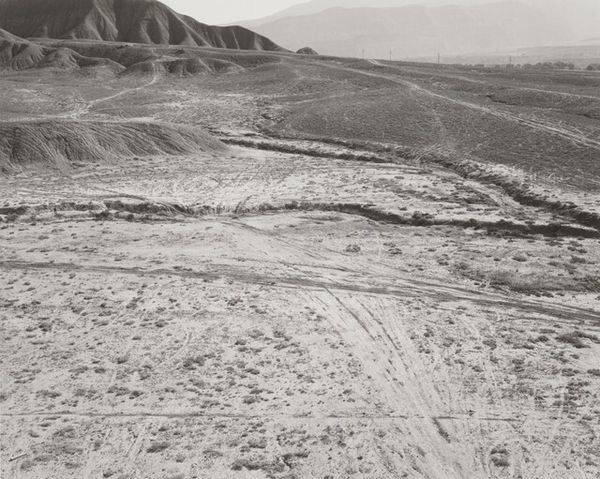
sculpture, architecture
concrete-art
land-art
environmental-art
geometric
sculpture
abstraction
modernism
architecture
Editor: So this is Michael Heizer's *45°, 90°, 180°/City*, created in 1999. It's made of concrete and, from this image, seems almost like an ancient ruin that's been freshly unearthed. It's incredibly stark and geometric. What sort of stories do you think these forms are trying to tell? Curator: Consider how mathematical angles are named. 45°, 90°, 180°. In what cultures and histories are these measures prominent and how? For instance, the square, derived from the 90° angle, symbolizes material existence and order. But in the context of land art, where the artwork merges with the environment, could Heizer be challenging the order imposed by these measurements against the landscape? Editor: That's a fascinating point. So the shapes themselves become a language. Curator: Precisely. Geometric forms like squares and triangles are ubiquitous across civilizations – consider the pyramids, early architecture, and countless symbolic representations of the self in both Eastern and Western philosophy. These aren’t just shapes but deeply embedded cultural memories. Does the choice of concrete, against the desert landscape, perhaps amplify a tension between human construction and natural form? Editor: It does create quite the contrast! The concrete almost feels like an intrusion on the landscape, while the forms are softened by the earth around it. Curator: Exactly. It speaks to the enduring human need to imprint our symbolic order upon the natural world, doesn't it? These symbols speak silently, echoing throughout art history, resonating within our own psychology. Editor: I hadn't considered how charged simple geometry could be. Curator: Art often challenges us to reconsider the everyday. In this work, mathematical certainties and concrete reality intertwine.
Comments
No comments
Be the first to comment and join the conversation on the ultimate creative platform.
